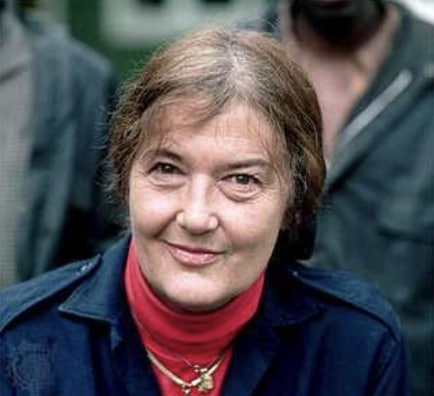
Dian Fossey was born on January 16, 1932, in San Francisco, California. Her parents divorced when she was six years of age, and her mother remarried the following year. Her stepfather was a strict disciplinarian who was somewhat distant in expressing his feelings, and the young girl was lacking in emotional support during her formative years. During that time, Dian found companionship in bonding with animals. At age 6, she was riding horses–a passion that continued through her teenage years.
On graduation from Lowell High School in Marin County, Dian pursued a business program at the College of Marin in San Francisco, but her innate love of animals prompted her at age 19 to enrol in a pre-veterinary course at the University of California, Davis. During this period, she supported herself by taking a variety of part-time jobs. In the second year of her program at UC, Dian failed her chemistry and physics courses. She consequently enrolled in San Jose State College from which she graduated in 1954 with a bachelor’s degree in occupational therapy.
The following year, Dian went to Kentucky where she entered and won an equestrian competition. While in Kentucky, she found a job at the Kosair Crippled Children’s Hospital in Louisville, as an occupational therapist. During her employment at the hospital, she lived on a Kentucky horse farm with friends who provided the kind of family environment that she had craved in her early years.
In 1963, at the age of 31, Dian took her life savings of $8000 for a seven-week visit to Africa. Shortly after arriving in Nairobi, Kenya, she met famous actor William Holden who introduced her to a safari guide from whom she learned about the wildlife of sub-Sahara Africa. Through a series of social connections and introductions to researchers, Dian learned about the work of Jane Goodall and the need for research on the great apes. Fossey’s work with gorillas began in 1966 when she established the Karisoke Research Center in the Volcanoes National Park in Rwanda. Over the years, she conducted groundbreaking research on gorilla behavior and communication, providing valuable insights into their social structures.
In the subsequent decades, Fossey became a passionate advocate for gorilla conservation and fought against poaching and habitat destruction. Her dedication to the protection of mountain gorillas made her a prominent figure in the field of primatology and wildlife conservation. Fossey’s autobiography, Gorillas in the Mist, was published in 1983 and later adapted into a film in 1988. The book and film portrayed her life and work, shedding light on the challenges she faced and the importance of gorilla conservation.
Unfortunately, Dian Fossey’s life was cut short December 26, 1985, when she was brutally murdered in her cabin at the research center in Rwanda. The circumstances surrounding her death remain unresolved, but her legacy continues through the work of organizations dedicated to gorilla conservation and research.
